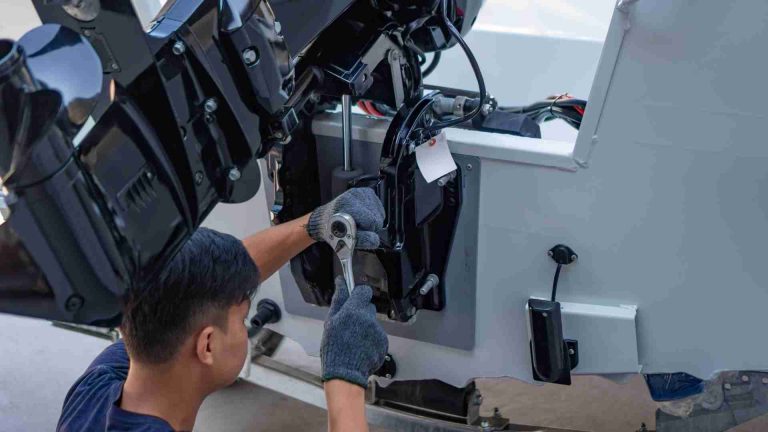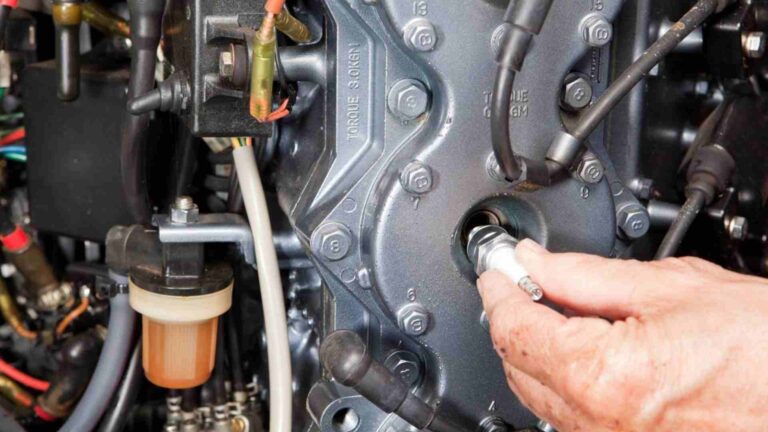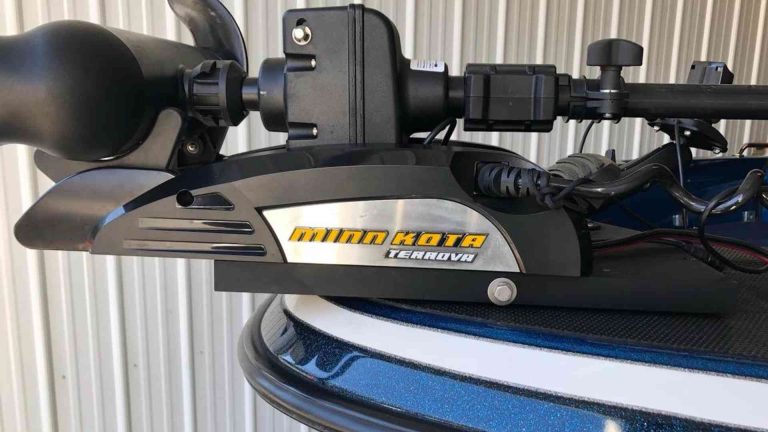Do Outboard Motors Have Alternators and Charge Batteries?
When it comes to boating, having a reliable source of electrical power is crucial for various onboard systems and equipment. However, there is often confusion and misconception surrounding the presence of alternators in outboard motors. Many boat owners wonder whether outboard motors have alternators or rely solely on the battery for electrical power. In this article, we aim to provide clarity on this topic and shed light on the role of alternators in outboard motors.
We will begin by explaining the electrical system of outboard motors and its significance. Then, we will delve into the role of alternators, their function in generating electrical power, and their importance in charging the boat’s battery. We will also address the variation in alternator availability among different types of outboard motors and manufacturers. Additionally, we will explore alternator output and its impact on charging capacity.
Understanding the presence and function of alternators in outboard motors is essential for boat owners to ensure a reliable source of electrical power. We will also discuss the importance of battery maintenance and provide tips for extending battery life. Finally, we will briefly touch upon alternative charging options for boats without alternators or with limited charging capacity.
By the end of this article, you will have a clear understanding of whether outboard motors have alternators and their significance in powering the electrical systems on your boat. Let’s dive in and unravel the truth about alternators in outboard motors.
Understanding the Electrical System of Outboard Motors

Outboard motors have a dedicated electrical system that plays a vital role in powering various components on a boat. This system consists of several key components, including a battery, wiring, switches, fuses, and, in some cases, an alternator.
The primary function of the electrical system in an outboard motor is to provide power to essential components and accessories on the boat. These components include navigation lights, fishfinders, GPS systems, radios, bilge pumps, and other safety equipment. Electrical power is also needed for starting the engine, operating the ignition system, and powering the electric tilt and trim functions.
The electrical system is crucial for navigation, allowing boaters to safely navigate in low-light conditions or during nighttime. Navigation lights ensure the boat is visible to other vessels, helping to prevent accidents on the water. Electrical power is also essential for communication, enabling boaters to use radios or other communication devices for effective communication with other boats or emergency services.
Moreover, the electrical system powers safety equipment like bilge pumps, which help remove water from the boat’s bilge area, keeping it afloat and preventing potential flooding. Electrical power also supports other safety features such as horn or sound signaling devices, emergency lights, and even onboard fire suppression systems.
In summary, the electrical system of outboard motors is crucial for powering essential components and accessories on a boat. It ensures proper navigation, communication, and safety on the water. While the battery is the primary source of electrical power, the presence of an alternator can further enhance the charging capacity and overall reliability of the electrical system.
The Role of Alternators in Outboard Motors
An alternator is a device that generates electrical power in a vehicle or machinery. In the context of outboard motors, an alternator serves the same purpose by converting mechanical energy into electrical energy.
The primary role of an alternator in an outboard motor is to charge the boat’s battery or batteries while the engine is running. As the engine turns, it drives a belt connected to the alternator, which spins the alternator’s rotor. This rotation generates electricity through electromagnetic induction, which is then used to charge the battery.
Having an alternator in an outboard motor provides several benefits. One of the key advantages is the ability to charge the battery while the engine is running. This ensures that the battery remains charged, providing a reliable source of electrical power for the boat’s systems and accessories. It eliminates the need for external battery chargers or relying solely on shore power when the boat is docked.
Another benefit of an alternator is its ability to sustain the electrical demands of the boat even when the battery is being used. It helps maintain a sufficient charge in the battery, allowing for extended operation of electrical components without worrying about draining the battery excessively.
Furthermore, an alternator in an outboard motor offers convenience and peace of mind. It eliminates the need to frequently recharge or replace batteries, especially during extended trips or when boating in remote areas where access to external power sources may be limited.
Overall, the presence of an alternator in an outboard motor is advantageous as it provides a reliable and continuous source of electrical power by charging the battery while the engine is running. This ensures the proper functioning of essential systems and accessories on the boat and enhances the overall boating experience.
Different Types of Outboard Motors and Alternator Availability
Outboard motors can be broadly categorized into two-stroke and four-stroke engines. Understanding the differences between these types helps clarify the presence or absence of alternators and their availability.
1. Two-Stroke Outboard Motors:
Two-stroke outboard motors are traditionally known for their simplicity and lightweight design. These motors have a simpler construction and operate on a two-stroke cycle, meaning they complete a power cycle in every two strokes of the piston. In the past, two-stroke outboard motors commonly did not have built-in alternators. Instead, they relied on external battery chargers or separate charging systems to replenish the battery’s charge.
However, modern advancements have introduced two-stroke outboard motors with integrated alternators. These alternators are designed to generate electrical power and charge the battery while the engine is running. The presence of an alternator in a two-stroke outboard motor enhances its versatility and eliminates the need for external charging sources.
2. Four-Stroke Outboard Motors:
Four-stroke outboard motors are known for their fuel efficiency, quieter operation, and lower emissions. These motors operate on a four-stroke cycle, which involves intake, compression, power, and exhaust strokes. Four-stroke outboard motors are generally larger and heavier than their two-stroke counterparts, accommodating additional components and features.
The majority of modern four-stroke outboard motors come equipped with alternators. These alternators are integrated into the motor’s design and provide a dedicated charging system for the battery. The alternators in four-stroke outboard motors vary in output capacity, depending on the specific model and manufacturer.
The variation in alternator availability among different models and manufacturers is influenced by several factors. One key factor is the intended usage of the outboard motor. Manufacturers may offer different options and configurations to cater to a wide range of boating needs, from small recreational boats to larger vessels requiring more electrical power.
Additionally, the size and design of the outboard motor can affect the availability of alternators. Smaller outboard motors, particularly those used for lightweight or portable applications, may prioritize compactness and simplicity over the inclusion of an alternator.
Furthermore, the availability of alternators may also depend on the manufacturer’s product lineup and the specific market demands. Some manufacturers may offer outboard motor models with different features and options to accommodate varying customer preferences and price ranges.
It’s important to note that the presence or absence of an alternator in an outboard motor can vary among different models and manufacturers. When selecting an outboard motor, it is advisable to check the specifications provided by the manufacturer or consult with a knowledgeable dealer to determine the availability of an alternator and its specific output capacity.
Alternator Output and Charging Capacity:
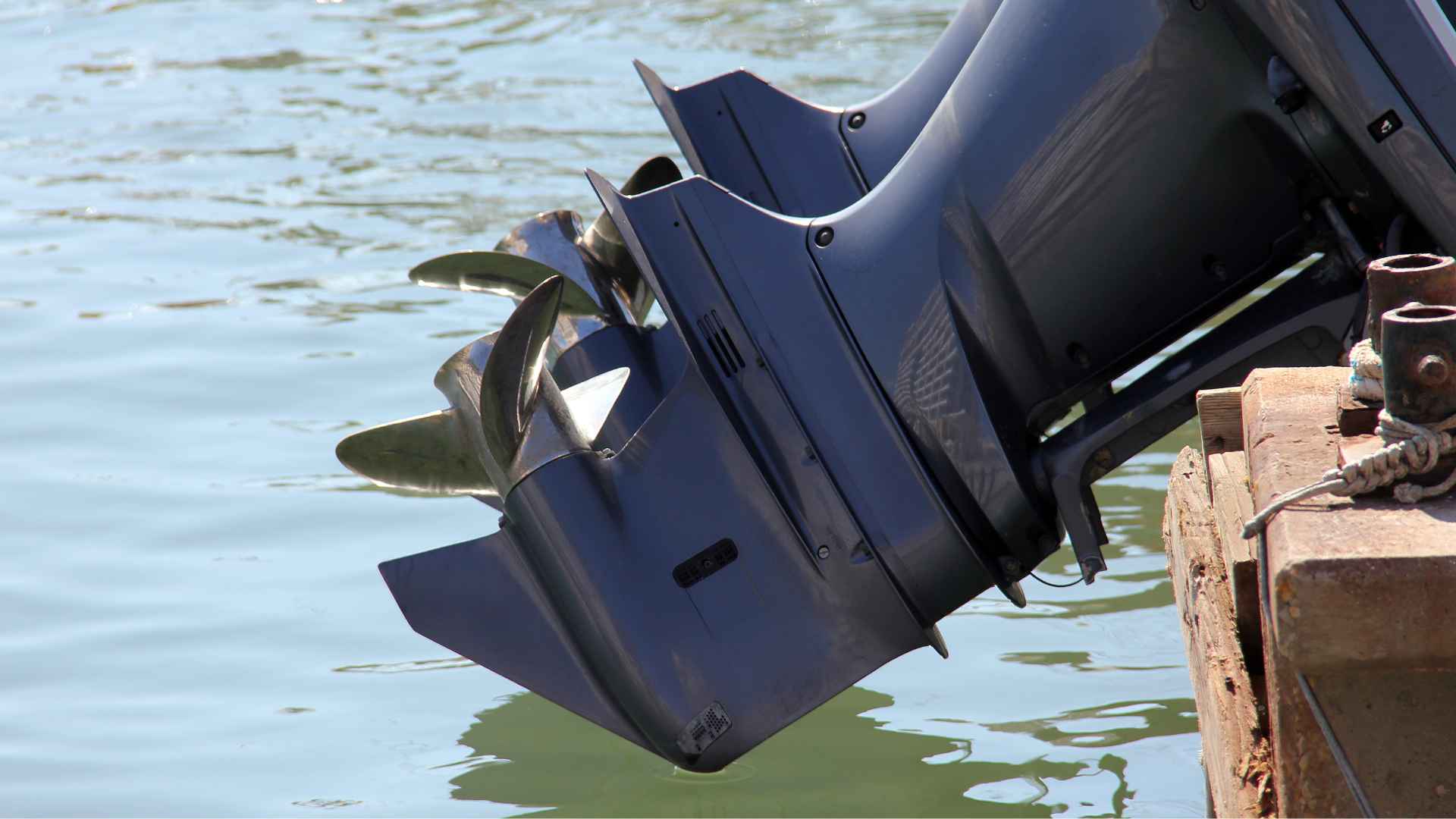
The alternator output refers to the amount of electrical power generated by the alternator in an outboard motor. This output is measured in amperes (A) and determines the charging capacity of the battery.
The charging capacity of an alternator depends on several factors, including the alternator’s design, size, and the specific requirements of the outboard motor. The alternator’s output capacity must match or exceed the electrical demands of the boat’s systems and accessories, as well as the charging needs of the battery.
The alternator output capacity can vary among different outboard motor models and manufacturers. Common alternator outputs for outboard motors typically range from around 6 to 60 amps. Smaller outboard motors designed for smaller boats may have lower output capacities, while larger and more powerful outboard motors may feature higher output capacities.
The ability of an alternator to charge batteries depends not only on its output capacity but also on the condition and specifications of the battery. Factors that influence charging capacity include the battery’s ampere-hour (Ah) rating, state of charge, and its ability to accept a charge. It’s important to consider the compatibility between the alternator’s output and the battery’s charging requirements to ensure efficient and effective charging.
For example, a common alternator output of around 10-20 amps is typically sufficient to charge batteries commonly used in smaller recreational boats. These batteries, such as marine deep cycle batteries or starting batteries, often have ampere-hour ratings ranging from 50Ah to 100Ah. Higher output alternators, in the range of 30-60 amps, are often found in larger outboard motors used on bigger vessels with higher electrical demands.
It’s worth noting that the charging capacity of an alternator may vary depending on the engine’s RPM (revolutions per minute). Higher RPMs typically result in greater alternator output and faster charging rates. However, it is important to operate the outboard motor within the recommended RPM range specified by the manufacturer to ensure optimal performance and avoid excessive strain on the alternator or other components.
When selecting an outboard motor, it is crucial to consider the alternator output capacity and ensure it is compatible with the electrical demands of the boat and the battery’s charging requirements. Consulting the manufacturer’s specifications or seeking guidance from a reputable dealer can help determine the appropriate alternator output for your specific needs.
Importance of Regular Battery Maintenance and Monitoring.
Regular battery maintenance and monitoring are essential for ensuring optimal performance and longevity of the battery in boats with outboard motors. Neglecting battery maintenance can lead to decreased battery life, unreliable electrical power, and potential safety hazards.
Here are some reasons why battery maintenance is crucial:
- Longevity and Reliability: Proper maintenance helps extend the life of the battery, allowing it to deliver consistent and reliable electrical power over an extended period. Regular maintenance can help prevent premature battery failure, saving you from the inconvenience and cost of replacing the battery.
- Efficient Charging: A well-maintained battery can accept a charge more efficiently. By keeping the battery in good condition, you optimize the charging process and reduce energy loss during charging. This ensures that the battery reaches its full charge capacity and provides maximum power when needed.
- Safety: Battery maintenance also plays a vital role in ensuring safety on the water. Neglected batteries can leak acid, leading to corrosion or damage to other electrical components. Regular maintenance helps detect any signs of damage or leakage, allowing for timely repairs or replacement.
To maintain and extend the life of the battery on boats with outboard motors, consider the following tips:
- Regular Inspection: Periodically inspect the battery for any signs of damage, corrosion, or loose connections. Ensure that the battery terminals are clean and securely tightened.
- Proper Charging: Follow the manufacturer’s recommendations for charging the battery. Avoid overcharging or undercharging the battery, as it can affect its performance and lifespan. If possible, use a smart charger or a charger with automatic voltage regulation to prevent overcharging.
- Avoid Deep Discharge: Try to avoid fully discharging the battery whenever possible. Deep discharges can reduce the battery’s capacity and overall lifespan. Recharge the battery promptly after use, and consider using a battery monitor or voltage indicator to keep track of the battery’s state of charge.
- Store the Battery Properly: During periods of non-use, store the battery in a cool, dry place away from direct sunlight and extreme temperatures. Consider disconnecting the battery or using a battery maintainer to keep it at an optimal charge level.
- Follow Maintenance Schedule: Adhere to the recommended maintenance schedule provided by the battery manufacturer. This may include periodic cleaning, applying a protective coating to the terminals, and checking electrolyte levels (if applicable).
By following these maintenance tips and keeping a close eye on the battery’s condition, you can ensure reliable electrical power and maximize the lifespan of your boat’s battery.
Remember, safety is of utmost importance when handling batteries. Follow proper safety precautions and consult the battery manufacturer’s guidelines for specific maintenance procedures and safety recommendations.
Alternative charging options for boats without alternators or with limited charging capacity.
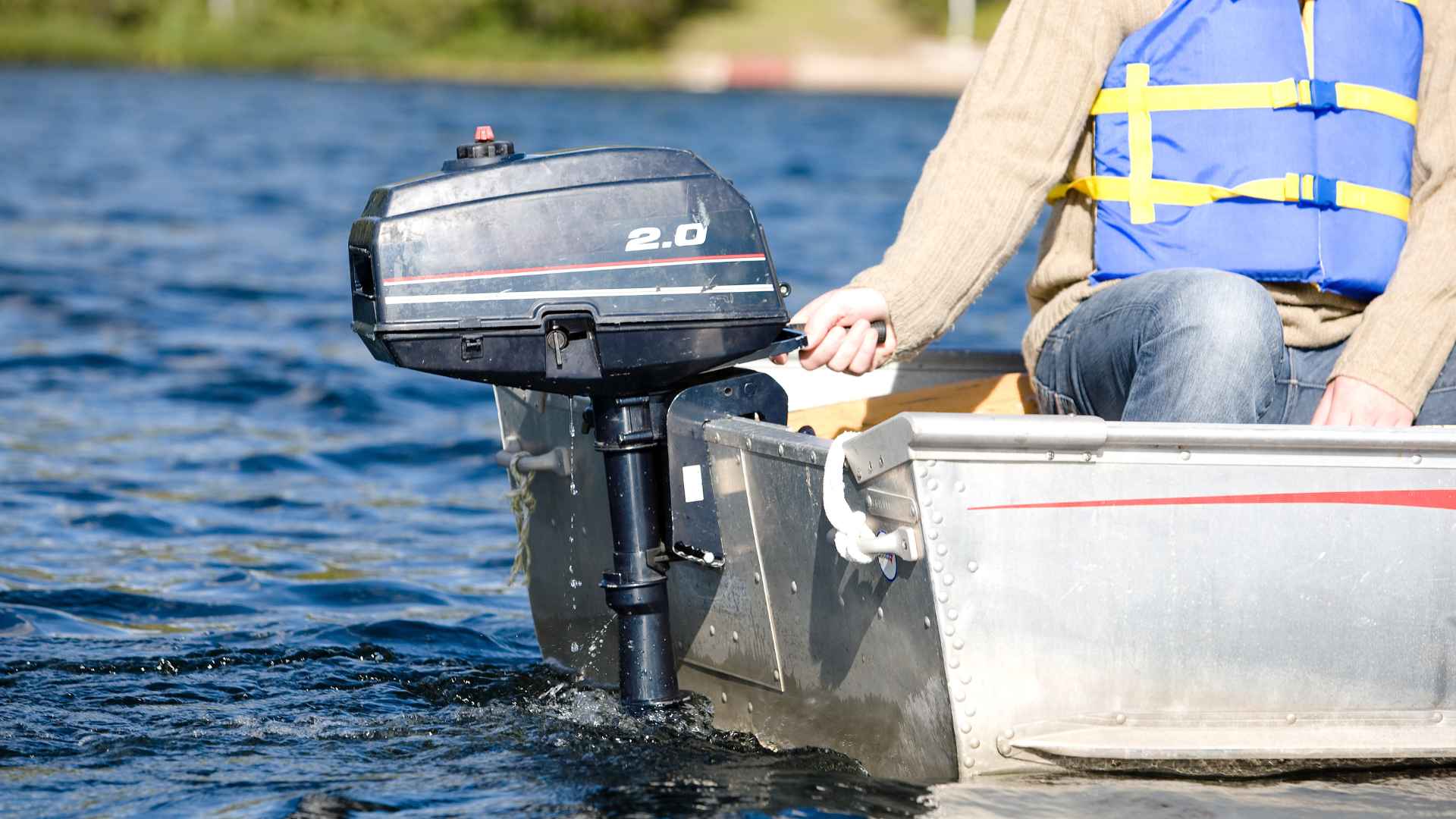
While outboard motors with alternators provide a reliable source of charging for the battery, there may be situations where boats do not have alternators or have limited charging capacity. In such cases, alternative charging options can be utilized to supplement or replace the charging needs. Here are a couple of options to consider:
1. External Battery Chargers:
External battery chargers, also known as battery maintainers or smart chargers, can be used to charge and maintain the boat’s battery independently of the outboard motor.
These chargers are designed to provide a controlled and optimized charging process, ensuring that the battery is charged to its full capacity without the risk of overcharging. They are typically portable and can be connected to the battery when the boat is not in use or during extended periods of downtime. External battery chargers are available in various types and capacities, so it’s important to select one that is compatible with your battery’s specifications.
2. Solar Panels:
Solar panels offer an eco-friendly and independent charging solution for boats. They harness sunlight and convert it into electrical energy to charge the battery. Solar panels can be mounted on the boat’s deck, roof, or other suitable locations where they can receive optimal sunlight exposure.
They are equipped with a charge controller to regulate and control the charging process, ensuring the battery is charged efficiently. Solar panels can be an ideal option for boats that spend extended periods in areas with ample sunlight, allowing for continuous charging even when the outboard motor is not running.
When considering alternative charging options, it’s important to assess your specific charging needs, the size and capacity of your battery, and the availability of suitable charging locations on your boat. Additionally, ensure that the chosen external charger or solar panel system is compatible with your battery type and voltage requirements.
Alternative charging options can be used independently or in conjunction with an outboard motor’s built-in charging system. They provide flexibility and peace of mind, particularly in situations where the outboard motor’s charging capacity may be limited or unavailable. Always follow the manufacturer’s instructions and safety guidelines when using external charging sources, and ensure that the charging process is carried out in a safe and controlled manner.
Remember, maintaining a reliable and charged battery is crucial for the proper operation of your boat’s electrical systems, so it’s important to explore all available options and choose the one that best suits your needs.
Watch Testing your outboard motor, Checking to charging system | Video
Do all outboard motors have alternators?
No, not all outboard motors have alternators. The presence of an alternator can vary depending on the specific model, type, and manufacturer of the outboard motor. It is important to check the specifications or consult the manufacturer to determine if a particular outboard motor has an alternator.
What is the function of an alternator in an outboard motor?
The primary function of an alternator in an outboard motor is to generate electrical power and charge the boat’s battery or batteries while the engine is running. The alternator converts mechanical energy from the engine into electrical energy, providing a reliable source of power for the boat’s electrical systems and accessories.
Why is it important for an outboard motor to have an alternator?
An alternator in an outboard motor is important for several reasons. It ensures a continuous and reliable source of electrical power, charges the battery while the engine is running, and helps maintain optimal battery performance. An alternator also provides power for essential systems such as navigation lights, communication devices, and safety equipment, enhancing the overall boating experience.
Can I add an alternator to an outboard motor that doesn’t have one?
In some cases, it may be possible to add an alternator to an outboard motor that doesn’t have one. However, it is a complex process that typically requires technical expertise and may not be feasible for all outboard motor models. It is recommended to consult with a knowledgeable professional or the outboard motor manufacturer for guidance on the possibility of adding an alternator to your specific outboard motor.
What is the typical output capacity of alternators in outboard motors?
The output capacity of alternators in outboard motors can vary depending on the specific model and manufacturer. Common alternator outputs for outboard motors range from around 6 to 60 amps. The output capacity determines the charging capacity of the battery and should be matched to the electrical demands of the boat’s systems and accessories.
Conclusion

In conclusion, the presence of alternators in outboard motors can vary depending on the specific model, type, and manufacturer. While not all outboard motors have alternators, many modern models are equipped with alternators to provide a reliable source of electrical power and charge the boat’s battery while the engine is running.
It is important to clarify the misconception or confusion regarding alternators in outboard motors to ensure accurate understanding. By understanding the electrical system of outboard motors and the role of alternators, boat owners can make informed decisions and ensure they have the necessary charging capabilities for their boat’s electrical needs.
Knowing whether an outboard motor has an alternator is essential for maintaining a reliable power supply, operating essential systems, and enhancing the boating experience. Alternators play a crucial role in charging the battery and powering various components and accessories on the boat, including navigation lights, communication devices, and safety equipment.
To ensure a dependable electrical system, boat owners should familiarize themselves with the specific features and specifications of their outboard motor. Checking the manufacturer’s documentation or consulting a knowledgeable professional can provide valuable insights into the presence and capabilities of an alternator.
In conclusion, understanding the electrical system and charging capabilities of outboard motors is vital for boaters. It enables them to make informed decisions, maintain a reliable power supply, and enjoy a safe and enjoyable boating experience. Take the necessary steps to ensure you have a reliable charging system for your boat’s electrical needs, whether it includes an alternator or alternative charging options.
Remember to refer to the manufacturer’s recommendations, follow proper maintenance procedures, and consult with professionals for accurate information and guidance. Enjoy your time on the water with a well-equipped and efficiently charged electrical system for your outboard motor.
Share
Share Do Outboard Motors Have Alternators and Charge Batteries? with your friends and Leave a comment below with your thoughts.
Read How to Start a Boat Out of Water: A Step-by-Step Guide until we meet in the next article.
